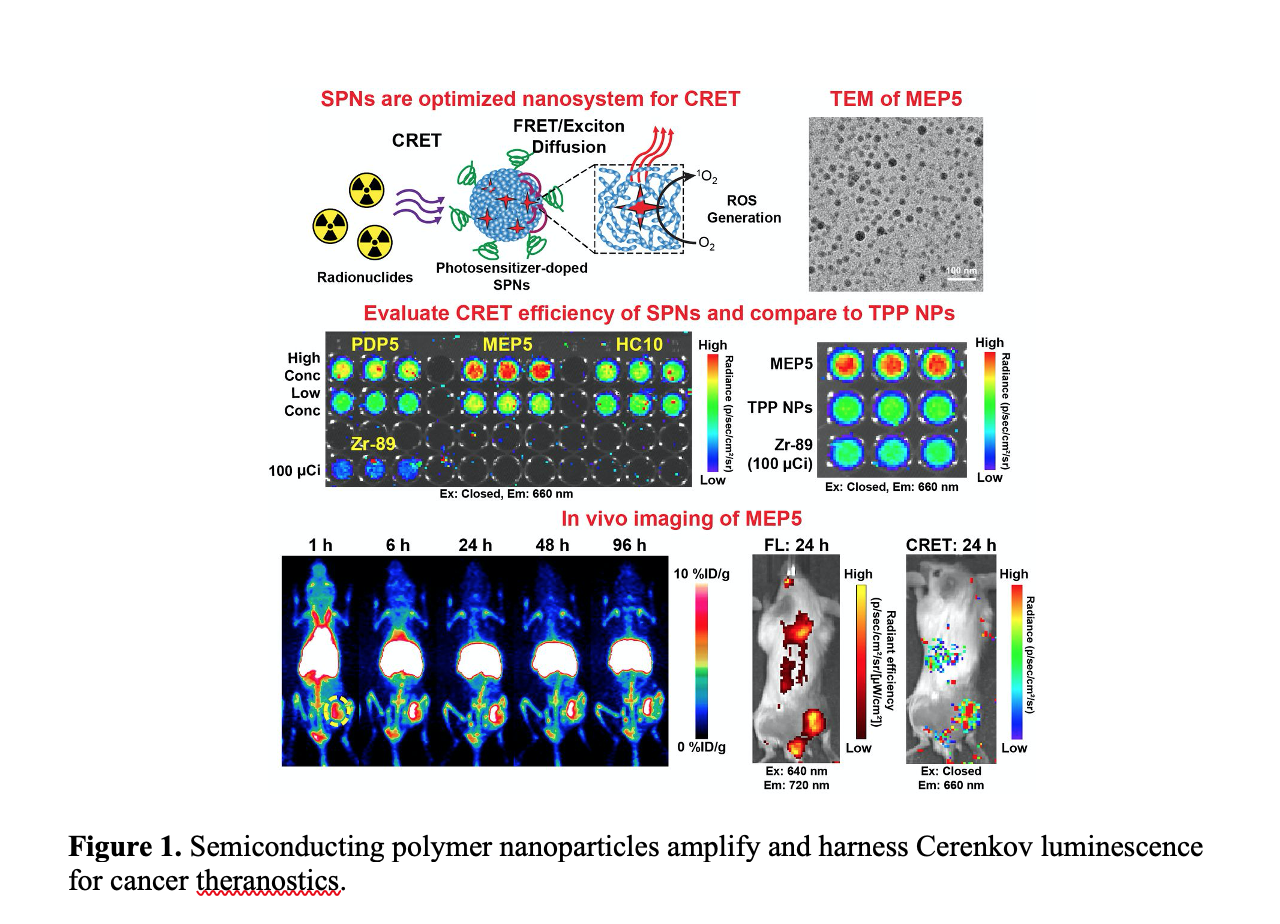SNMMI ’21: New Theranostics Approach Kills Cancer Cells Using Radiopharmaceuticals and Nanoparticles
 A novel cancer treatment approach uses light from decaying radiopharmaceuticals, known as Cerenkov luminescence, as an energy source to activate semiconducting polymer nanoparticles that kill cancer cells. Researchers presented this approach at the SNMMI’s 2021 Virtual Annual Meeting.
A novel cancer treatment approach uses light from decaying radiopharmaceuticals, known as Cerenkov luminescence, as an energy source to activate semiconducting polymer nanoparticles that kill cancer cells. Researchers presented this approach at the SNMMI’s 2021 Virtual Annual Meeting.
Over the past several decades, many studies have been conducted on photodynamic therapy, which uses an external light source to activate nanomaterials for cancer therapy. This therapy, however, is limited by the ability of external light to penetrate tissues. As Cerenkov luminescence is spontaneously produced from certain radiopharmaceuticals as they decay in the body, it has recently been proposed as an internal energy source for cancer therapy.
While Cerenkov luminescence is advantageous because it is a light source produced inside of the body, the light source is generally very weak. “The good news is that the light source can be amplified with semiconducting polymers, which greatly increases its potential to target and destroy cancer cells,” said Zachary Rosenkrans, graduate research assistant at University of Wisconsin-Madison in Madison, Wisconsin. “In our study we aimed to determine how to best utilize radiopharmaceuticals and nanoparticles to create the ideal cancer theranostics nanosystem.”
Researchers found that semiconducting polymer nanoparticles optimized with photosensitizers dramatically intensified Cerenkov luminescence to kill cancer cells. Positron emission tomography and optical imaging studies also clearly visualized tumor uptake of these optimized semiconducting polymer nanoparticles. This approach was found to have excellent potential as a cancer theranostics nanosystem without any tissue penetration limits.
“This work is an important step toward translating nanomaterials that are activated by light, using radiopharmaceuticals as an activation source. The basic concept, using semiconducting polymers to harness and amplify light produced from radiopharmaceuticals, is also very exciting and could have many interesting applications in the future,” Rosenkrans noted.